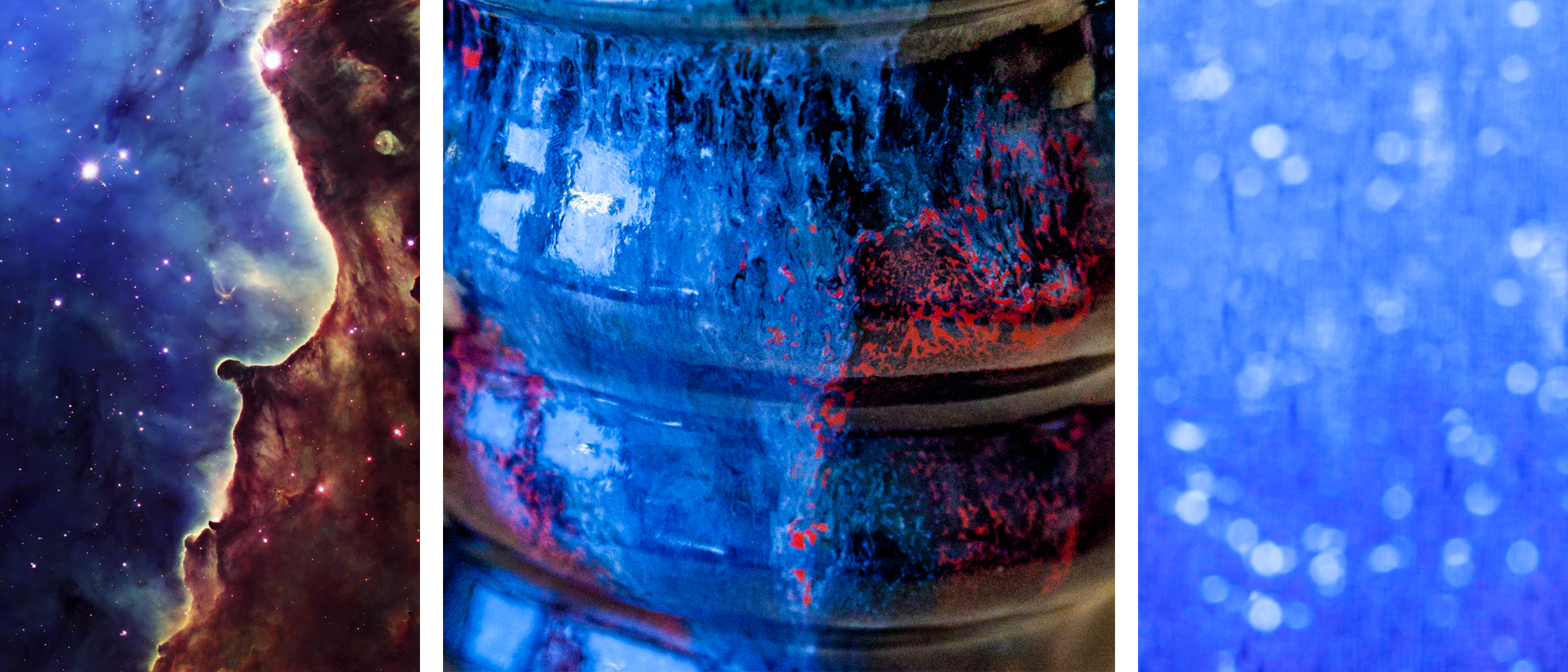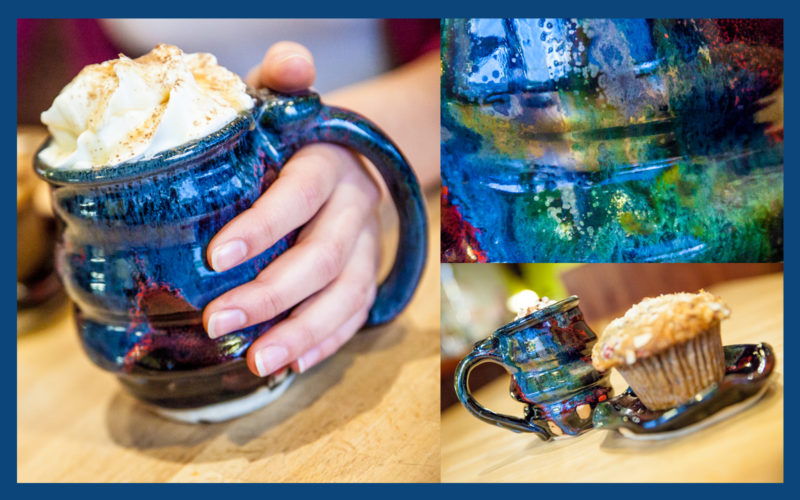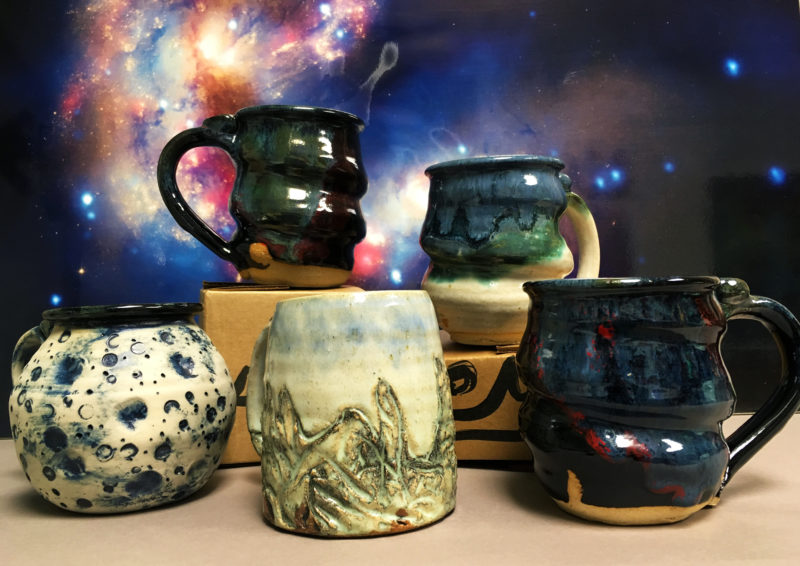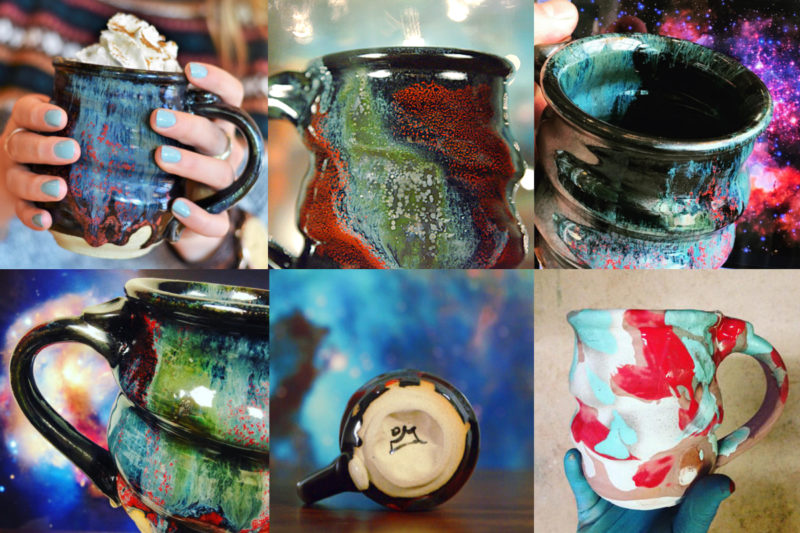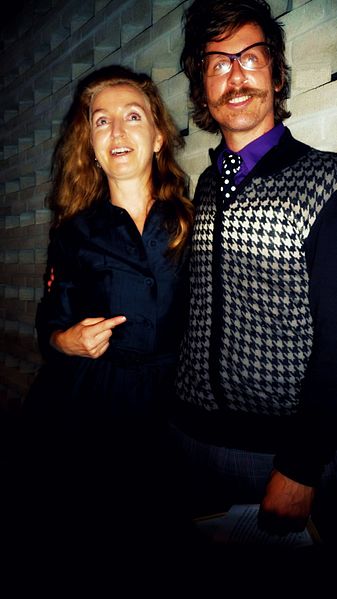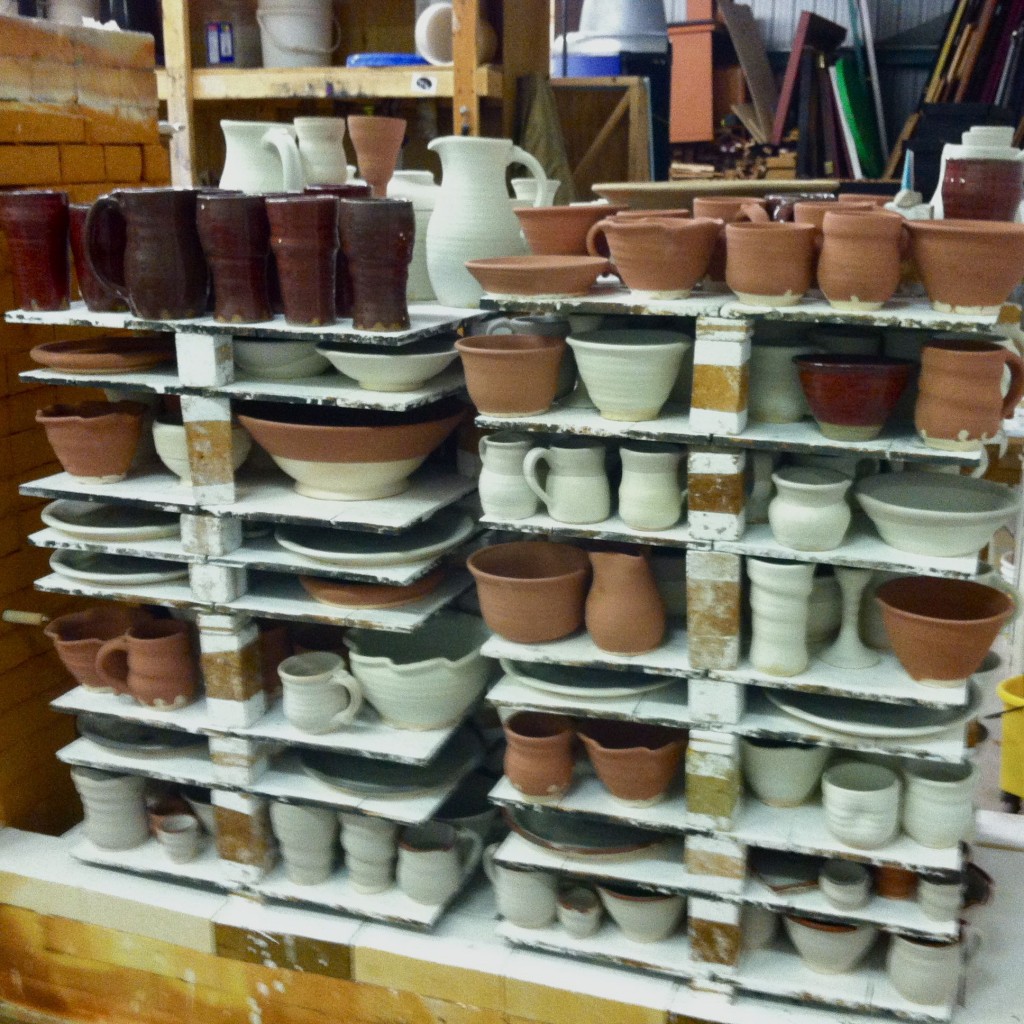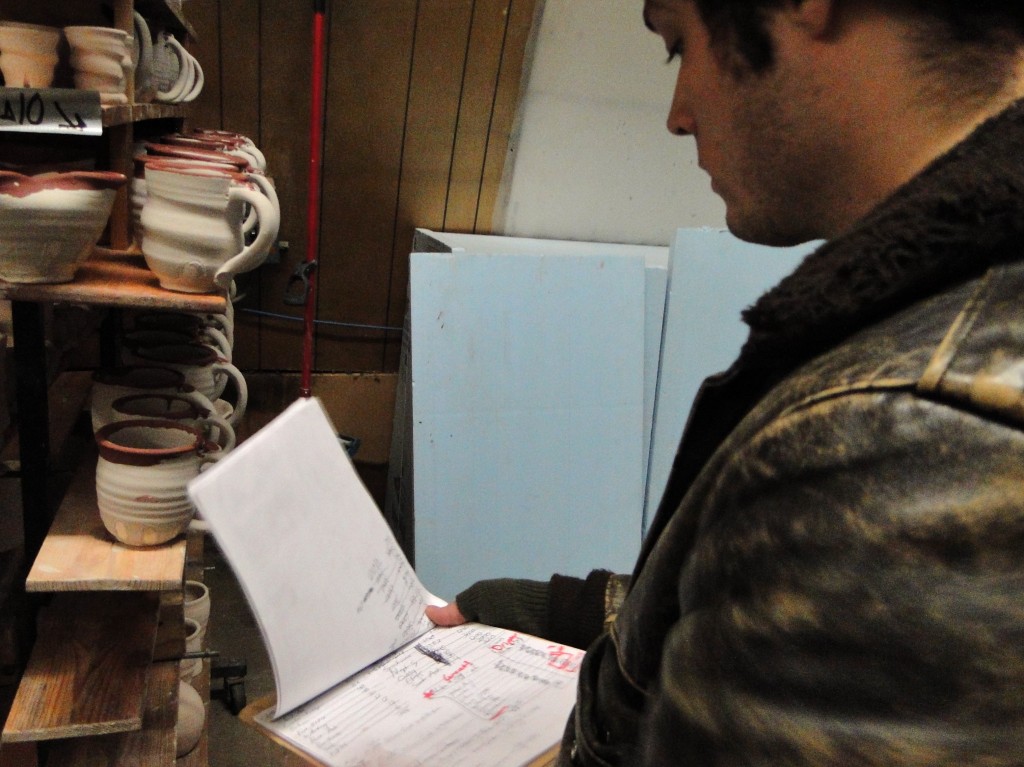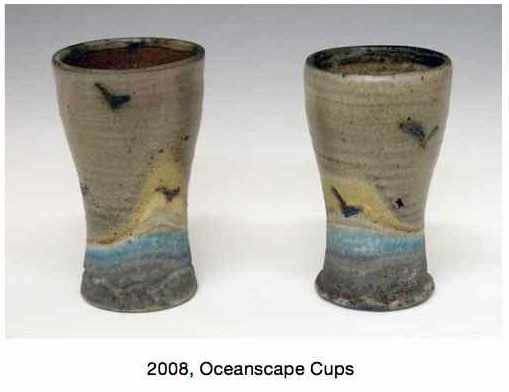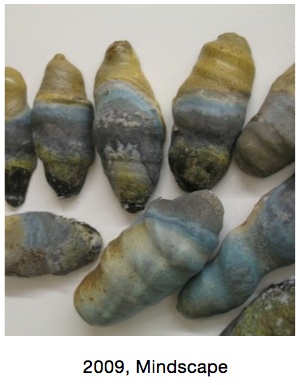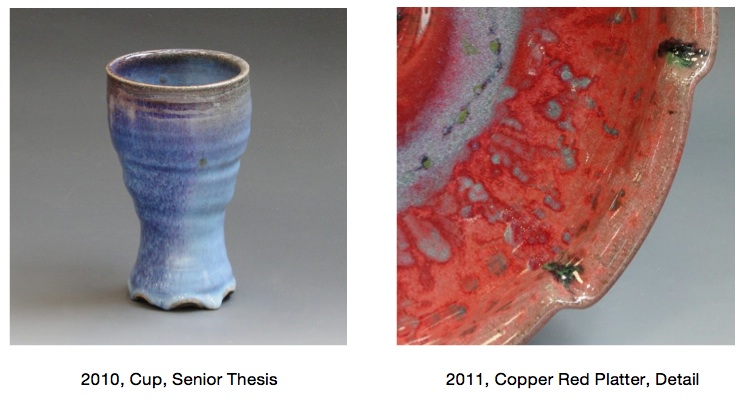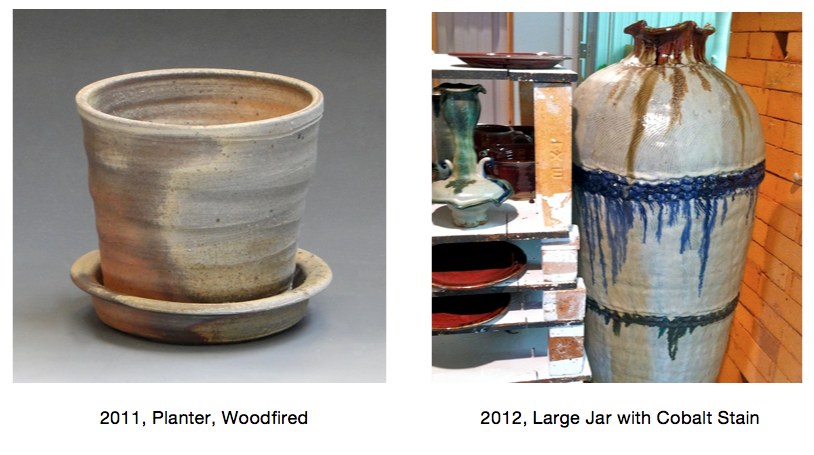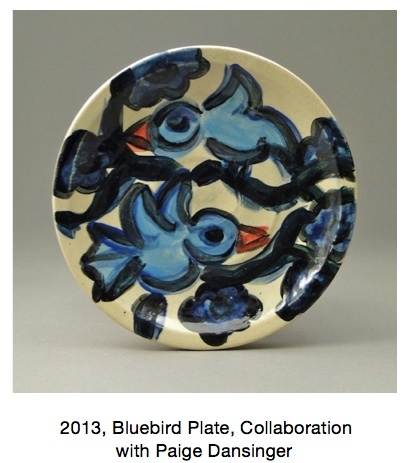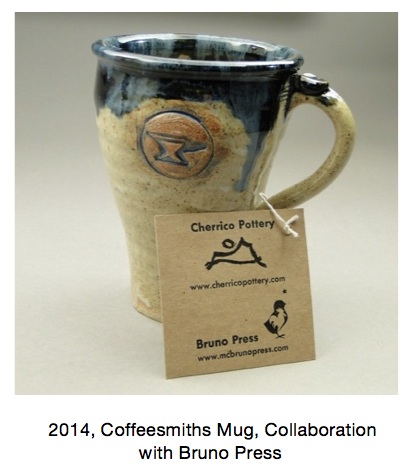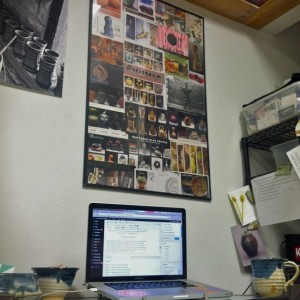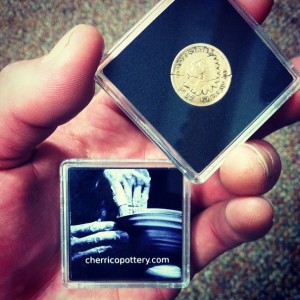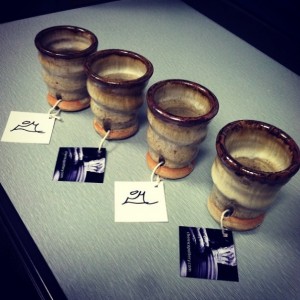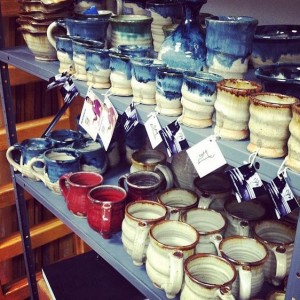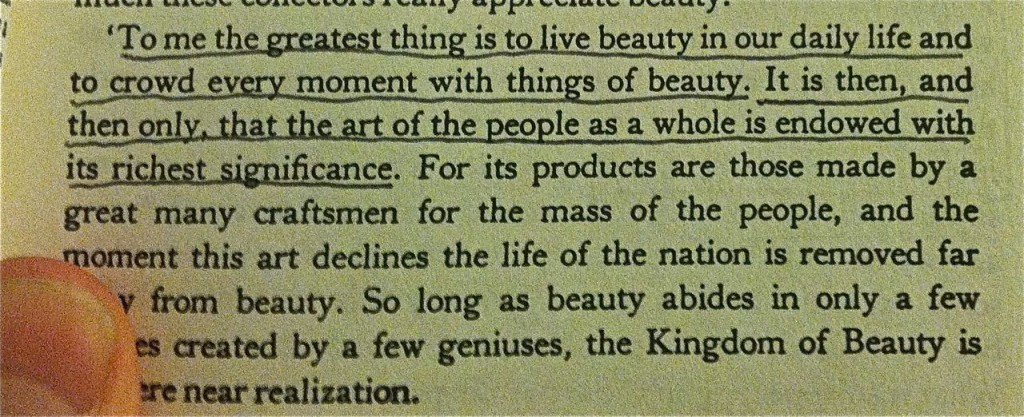Newer and Bluer Pottery: $600 Giveaway
The future of Cherrico Pottery is looking beautifully blue. Joel has been refining his craft and it’s visible in the newest Cosmic Mugs. Meticulous attention to detail by adding a fifth layer of glaze has resulted in amazingly colorful surfaces in his latest batch of pots. These new mugs are all about brilliant blues.
These aren’t the only Cherrico Pottery mugs to show the wonder of deep blue. Cobalt is a common glaze element to decorate bare pots. Cobalt blue gives special surfaces to many of our pots, including the Nuka Cobalt, Blue Moon Mugs and Mountain Mugs.
What’s So Great About Blue?
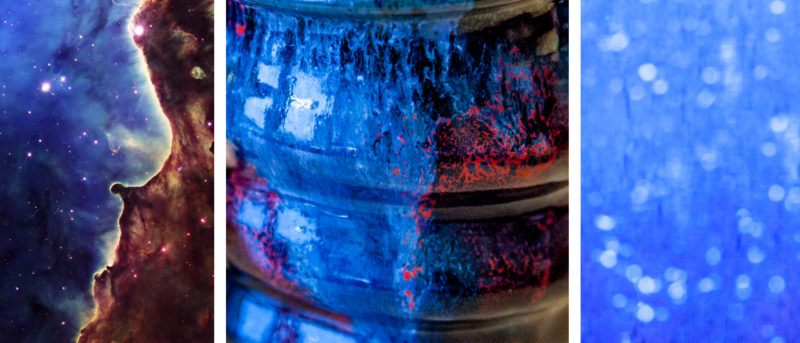
What do you think of when you see a Cosmic Mug? The goal is to resemble nebulae as shown in the left image. Hubblesite.org tells how it was created by ultraviolet radiation and stellar winds from several young stars. Sounds like a rather complex and distant topic. Can we not also see the references to everyday life in these abstract blue drips, like rain collecting on a window, as shown in the right image?
Astrophysicist Neil deGrasse Tyson helps us realize commonalities between outer space and everyday life: “Every one of our body’s atoms is traceable to the big bang and to the thermonuclear furnace within high-mass stars. We are not simply in the universe, we are part of it.“
Blue hues in Cosmic Mugs come from Cobalt. It is a rare earth element that is mined all over the world. Five pounds of raw cobalt powder would form just a small pile in your hands, yet it costs hundreds of dollars. It’s the rarest element Joel uses. He combines low percentages of cobalt with other ceramic glaze chemicals like feldspar and silica. After firing to 2400 degrees F. the glaze drips cool and result in deep blue hues.
Don’t worry if you’re a bit confused- so are we. We don’t entirely understand what’s causing these colors, but they are stunning.
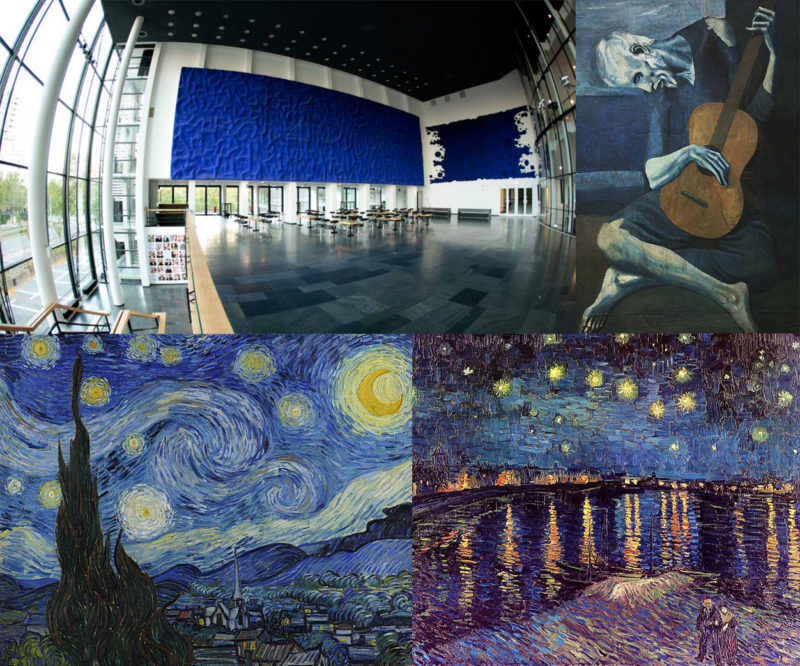
Joel’s cobalt blue pottery is also inspired by notable achievements in art history. These artists championed the color blue in their own unique ways:
- Yves Klein invented a new hue of blue and used it in large bodies of work that captivated audiences with their brilliance and simplicity.
- Picasso created essentially monochromatic bodies of work in various shades of blue during what is called his ‘Blue Period’.
- Van Gogh used nearly ten thousand blue brush strokes per painting without blending in his skies, communicating movement and emotion in unique, new ways.
We want you to feel our love of cobalt blue through our special blue pottery giveaway.
The Big Blue Mug Giveaway
Enter our giveaway for the your chance to win some of our best blue pottery: a brand new deep blue Cosmic Mug, Lunar Cobalt, Nuka Cobalt or Mountain Mug might be in your future. Five winners will be chosen randomly for $600 total worth of pottery. The giveaway ends on November 8th at 5pm. Enter now so you get more time to post the contest to your Facebook and Twitter to gain extra entries.
Random Cosmic Mugs
Our giveaway isn’t the only good deal for you. The Cosmic Mugs in our Random Sale were also brought back from the farthest ends of the galaxies just for you. Stock is going down, so get yours now while they’re still available.
“Blue is the color of longing for the distances you never arrive in, for the blue world.”
– Rebecca Solnit, Author, from the creative nonfiction piece The Blue of Distance
Photo credit: Charles Kremenak
Photography by: Nicole Pederson

